The Renner-Brenner Site Park


This site is not financially associated with the City of Riverside or any other funding, other than your donations. This is a privately owned sited by Gary Brenner for everyone.

When you donate, please make a note on the donation form that this is for archaeology.
You can search this site here. Fill in the blank line with your search, then hit the Google Search bar and it will bring up what it can find here.
Brenner
BRENNER EXCAVATIONS AT THE RENNER SITE
By: Gary BrennerGETTING EVERYTHING ON HERE IS STILL IN PROGRESS........IT'LL TAKE SOME TIME.
Over those years I did three major excavations. My first was in the yard under the current garage. By then, we owned the Renner house and I wanted to build a garage and that's where my first attempts at archaeology began.
All my work used the same datum point and numbering system Wedel used as well as Roedl and Howard.
The garage excavation lasted from 1981 to 1983. (1986 The Kansas City Archaeologist ,
Special Bulletin #1, RECENT EXCAVATIONS AT THE RENNER SITE)
The second joined at the northeast corner of where Wedel and Rodel and Howard's work was done and took one season in 1984. (1990 The Kansas City Archaeologist, Special Bulletin #2, RENNER SITE EXCAVATIONS.)
My last was the most intensive and lasted from 1985 to 1993. I'm still working on a final report.
BRENNER 1999

Steve Lamkins was one of my first students who quickly became a valued assistant where I couldn't have done
the excavations without him!

This is a map by SCI showing all my excavations in the blue color.
This also shows all previously published excavations. It also shows Dr. Walter Burks's work who was a professor at Park College where I took over his work for Maple Woods. I have all the material, but unfortunately he not take notes.
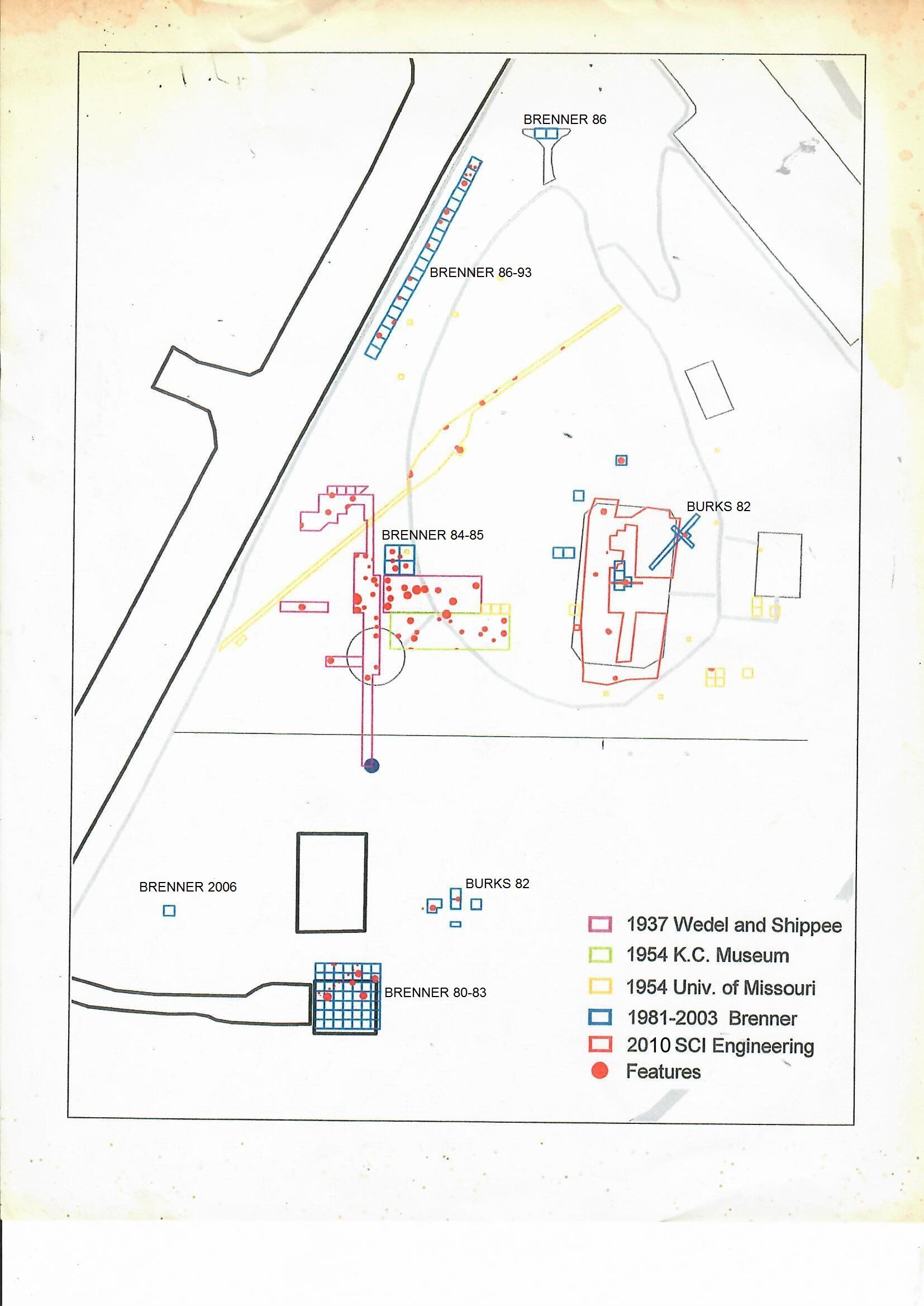
Photos of Brenner's 80 to 83 excavation.
Known as the garage excavation where after excavations,
Brenner built a garage over it.

My dad had bought an old Viet Nam era army mess tent for $50. We had to make our own poles, but I used in to cover the garage excavation in the early 80's from heat and rain. I put it up one night at 2 AM when I knew KCPT TV was to be there at 8 AM to do a show and it rained all night long, but I got the tent up. It's hard enough to do on flat ground, but over a hole and by myself in total darkness, was difficult to say the least.

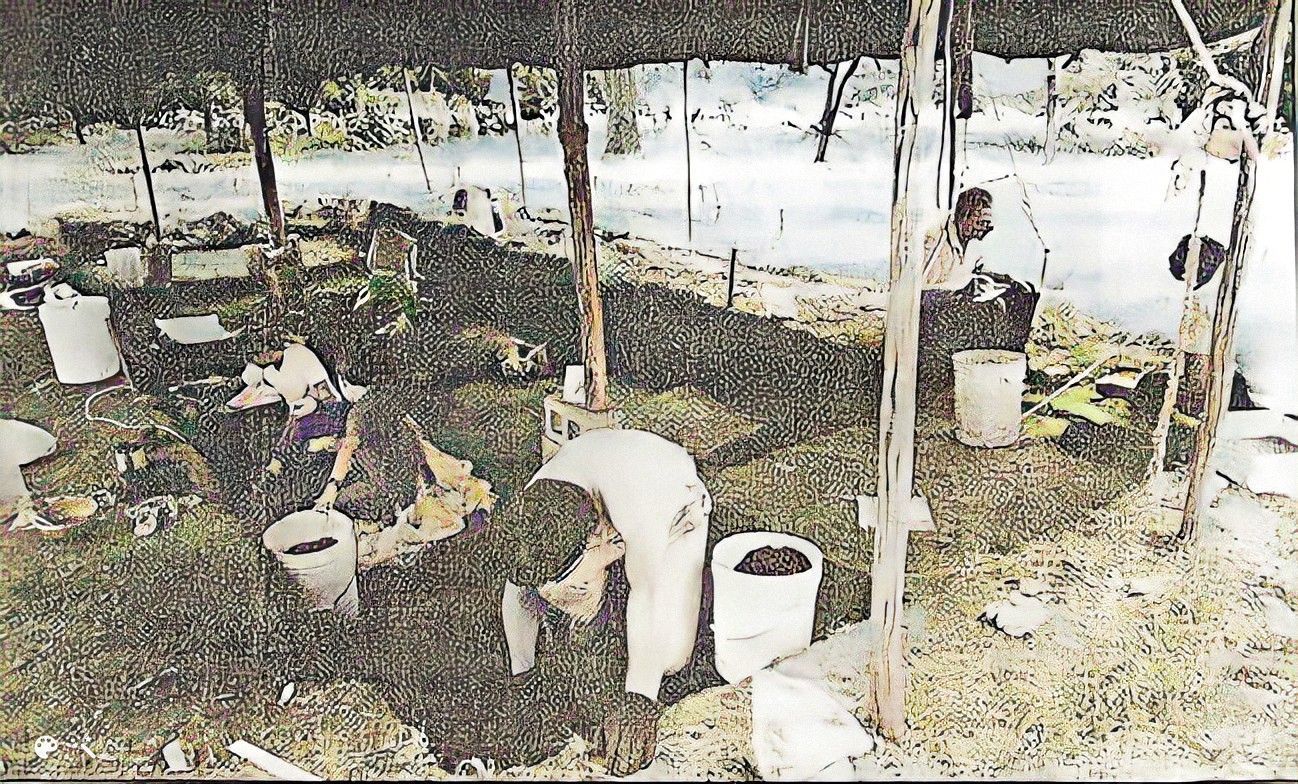
The garage excavation would end up being a very rich area where Brenner would find evidence of possible post molds that circled the existing home. Carolina Brenner Renner had informed Brenner that the home was built on the highest land on the property.

Regardless of how significant it was, Brenner had every artifact recorded on an index card. The number given the artifact would correspond to the box it would eventually be in and the card would be put in a file like a card catalog system. This card was actually filled out in the field. Brenner always wanted the student who found it to get credit and the card system also worked when he let a student take an artifact home week. He would know who had it, where it was, etc.
All the information on the card was transferred to a main book and when that was done, he marked the side of the card with a red "R", indicating it was recorded.
Each artifact would go into a white jewelry store type box where it would have the same information from the card on the box. Each box had foam and then those boxes went into a large box with all the others from that grid.
Objects such as rocks and flint chips were put into baggies and labeled with the grid and depth and kept.


1984-85
Excavated a 10 x 10 foot square on the northeast side of Wedel (1937) and north of Roedl and Howard (1954)
Of the 100 square foot area, only two grids were finished and inside those was found a "dog" burial. According to Dr. James Cupp (University of Missouri), the dog was actually coyote and it appeared to him it had suffered and perhaps died from an abscessed tooth. The animals skeleton was nearly complete in a somewhat shallow rock lined pit and found with diagnostic grave goods were all were broken as if possibly added by children. Among these was a drilled turtle shell fragment, a broken platform pipe, a complete bone fish hook and a considerable number of other artifacts. Brenner spent and entire season (3 months) carefully excavating just these two grids.
Below is his field sketch where Wedel's excavation was just to the top and Roedl and Howard just to the left.
In Brenner's words:
"As I excavated and began to realize a story unfolding, I became increasingly uncomfortable. It was the first time in all my years that I felt I was recovering something that I should leave there. It was obvious to me this was a very special animal and great care was taken in the burial and I respected that and took particular time during this emotional recovery."


Gary's Renner Site collection had become 55 of these boxes shown below.
1986
Brenner in the famous pit he found a 8" copper pin
and found "King Tut's" disease.
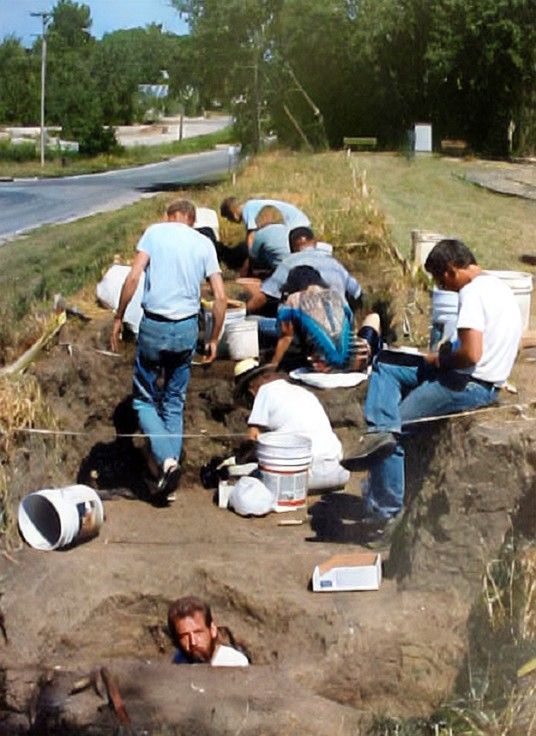
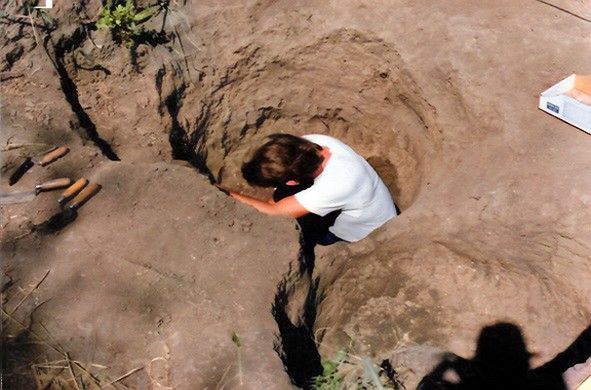



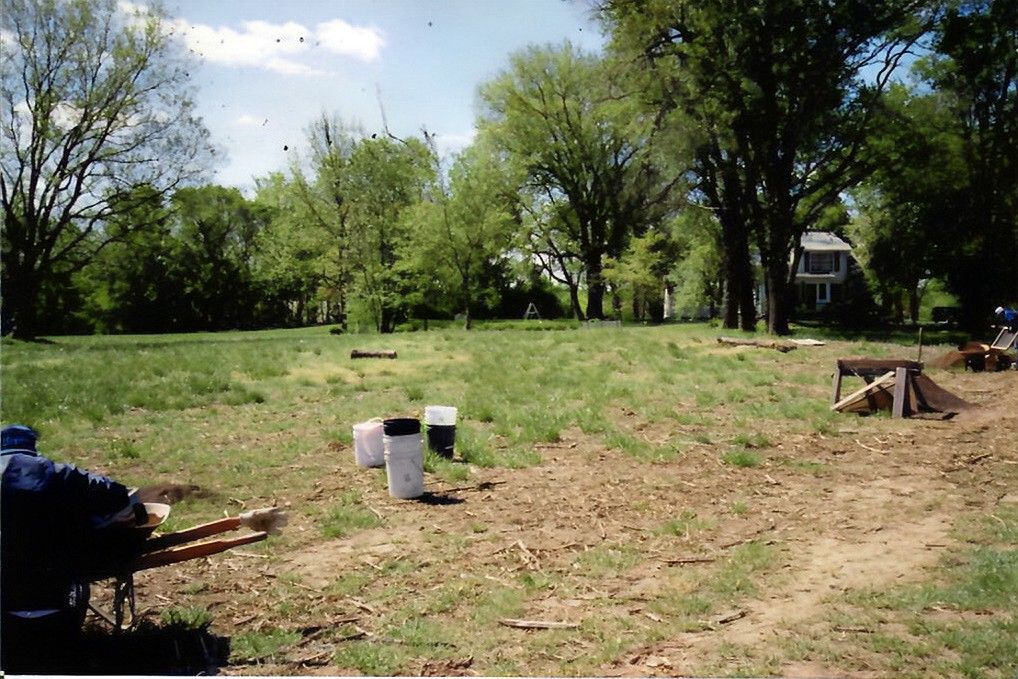

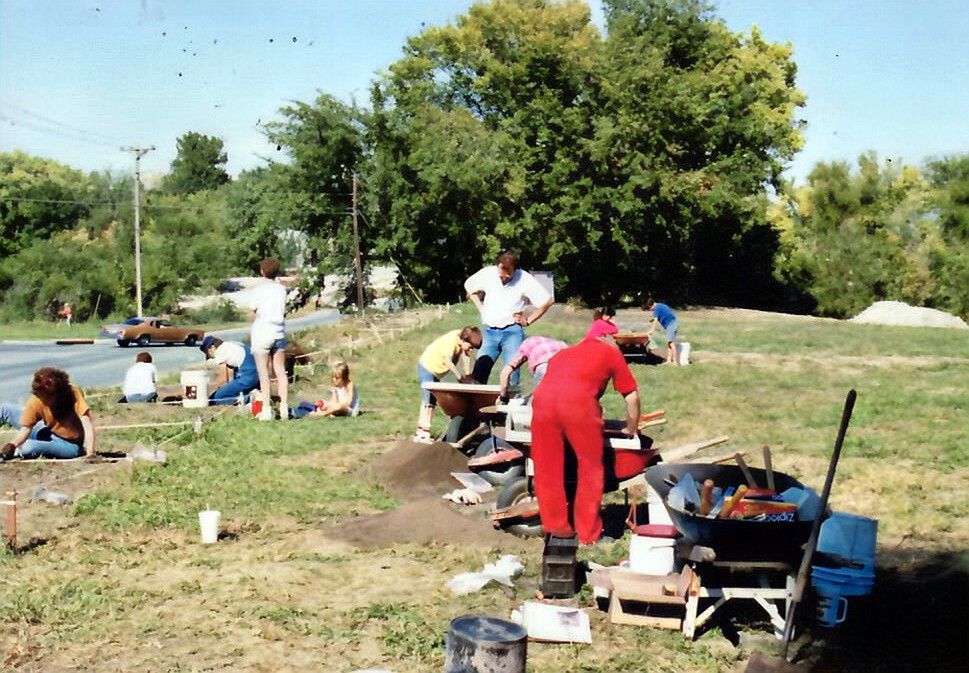
2010
Gary receives the J. M. Shippee Award from the Kansas City Archaeology Society.
Gary and Mary Conrad
Mary had been a student of Gary's during his 1982 garage excavation at Renner.


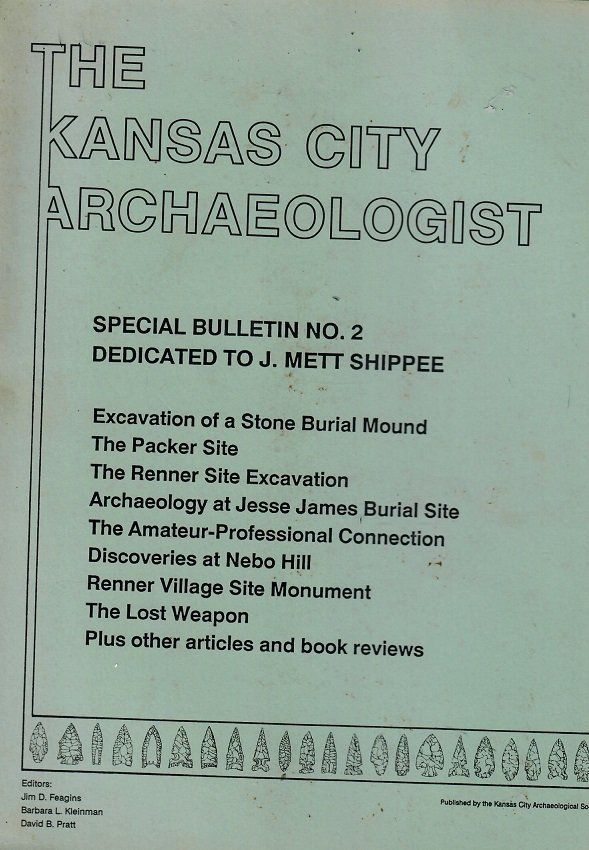
GARY'S AUTOMATIC SIFTER INVENTION
This is myself and Bud Kroneke with the only known photo I have of my sifter where this particular photo was taken in 1999 at Line Creek Park during salvage operations.
I always noticed students spending too much time at the sifter with many waiting in line and so I set to work to come up with a electric sifter. The motor, flywheels and belts, came from an old washing machine. The frame was from old bed rails and the round iron was from something my dad had laying around. Besides some nuts and bolts, the only thing I had buy was the front wheel. The wheels on the sifter part came from a couple old lawn mowers and the handle grips from an old mini bike.
I made several different actual screens of different sizes depending on the dirt. We used bigger 1/2" screens for wetter dirt and 1/4" screens for dry dirt. The arm that shook the screen worked like a old locomotive engine and it took some testing to get it just right. To do this, I drill different holes in the flywheel where I tried the arm in different holes until we got just the right speed and never had to change it.
The contraption was built to move forward leaving mounds of dirt as we went. It could easily sift a full 5 gallon bucket of dirt in less than 30 seconds! It had an on-off switch by your knee to easily stop it. In the early days we ran it off a generator before th Renner Site had electricity. Later, I bought 250' of wire and it ran off that. At Line Creek, we ran the wire the full 250' to the old museum.
On a typical Saturday, it would easily run 120 gallons of dirt in 6 hours. The only thing that ever broke on it was the switch of all things! What you can't see in the photo is the motor had a metal cover over it made from an old shovel. This protected it from both dirt and rain.
I would estimate it easily sifted over 3200 cubic feet of dirt.
Learn more about this sifter on the menu above.


EXCAVATIONS END UNEXPECTEDLY.................................................
The excavations came to a close in July 1991 after Gary inhaled an enzyme from sifting. The enzyme was believed to have been a pseudomonad that had been dormant for nearly 1500 years and became active when it hit water and air, which it found in Gary's lungs. The pseudomonad began it's work shutting down Gary's organs and within 6 hours, Gary was in North Kansas City Hospital where he would spend two weeks in critical condition. The generic term for a pseudomonad is King Tut's named after Howard Carter's similar experience with the King Tut tomb.
People, This page isn't funded by any University, city or organization. It is totally funded by Gary Brenner. Please take a moment to donate anything. The link is through Paypal and goes to my kclongrangeweather Paypal donation account under my wife's name, Karen Brenner. I will respond to every donation.
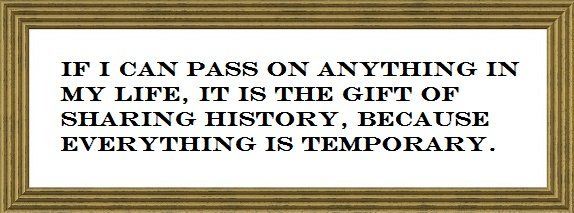
Contact Details
m80dadfireworks@aol.com
My Other Websites:
© 2024
All Rights Reserved | Gary D. Brenner
